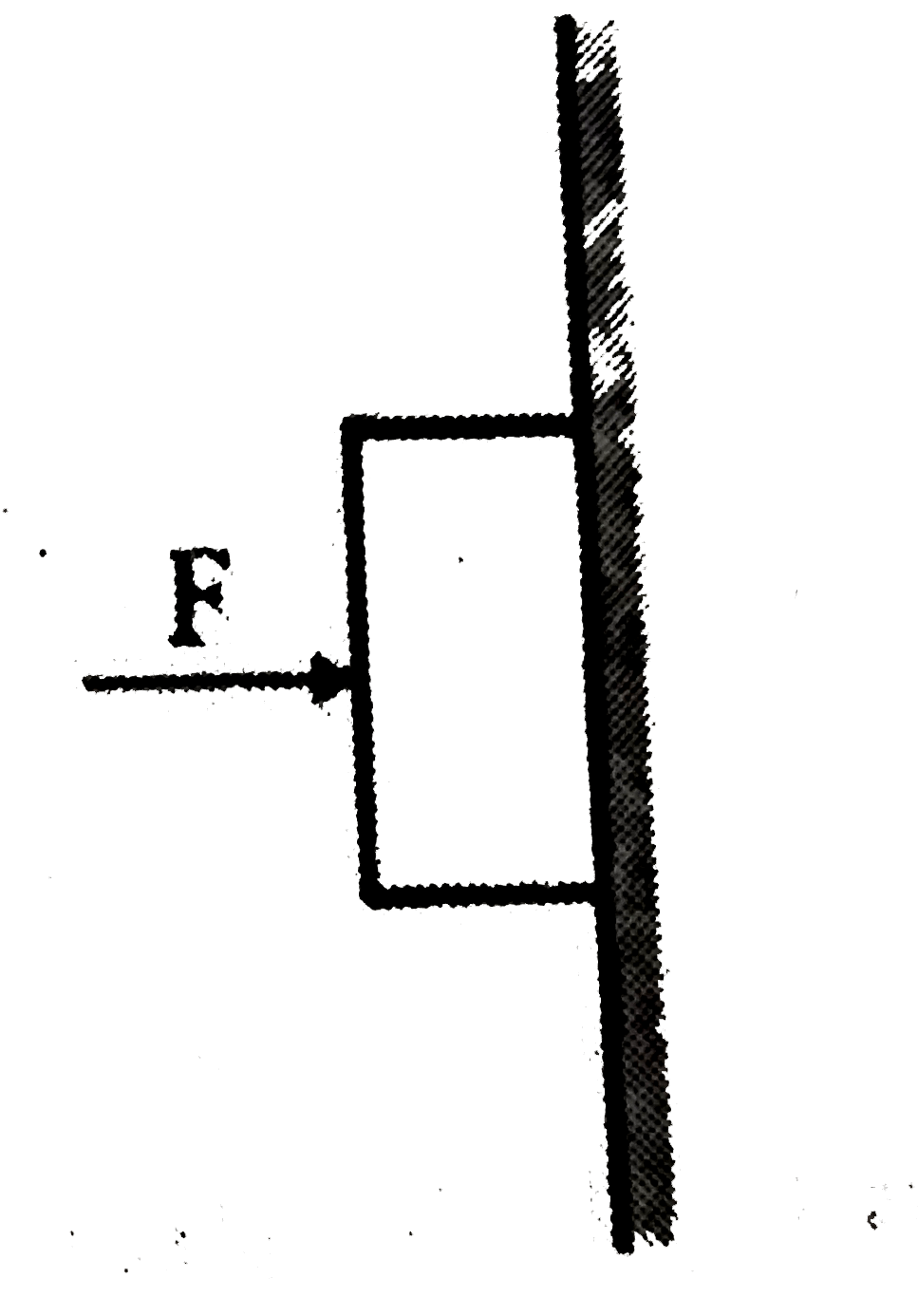Two bodies having the same mass 5kg each have different surface areas 20m2 and 10m2 in contact with a horizontal plane. If the coefficient of friction is 0.4, the forces of friction that come into play when they are in motion will be in the ratio
1:1
1:2
2:1
1:4
The correct Answer is:A
To solve the problem, we need to determine the forces of friction acting on two bodies with the same mass but different surface areas when they are in motion. The coefficient of friction is given as 0.4.
1. Identify the Mass of Each Body:
Each body has a mass m=5kg.
2. Identify the Coefficient of Friction:
The coefficient of friction μ=0.4.
3. Calculate the Normal Force:
The normal force N acting on each body is equal to its weight, which can be calculated using the formula:
N=m⋅g
where g (acceleration due to gravity) is approximately 9.8m/s2.
N=5kg⋅9.8m/s2=49N
4. Calculate the Force of Friction:
The force of friction Ff can be calculated using the formula:
Ff=μ⋅N
Substituting the values we have:
Ff=0.4⋅49N=19.6N
5. Determine the Ratio of Forces of Friction:
Since both bodies have the same mass and the same coefficient of friction, the force of friction acting on both bodies will be the same. Therefore, the ratio of the forces of friction for the two bodies is:
Ratio=Ff1Ff2=19.6N19.6N=1
Conclusion:
The forces of friction that come into play when the two bodies are in motion will be in the ratio of 1:1.
Each body has a mass m=5kg.
The coefficient of friction μ=0.4.
The normal force N acting on each body is equal to its weight, which can be calculated using the formula:
N=m⋅g
where g (acceleration due to gravity) is approximately 9.8m/s2.
N=5kg⋅9.8m/s2=49N
The force of friction Ff can be calculated using the formula:
Ff=μ⋅N
Substituting the values we have:
Ff=0.4⋅49N=19.6N
Since both bodies have the same mass and the same coefficient of friction, the force of friction acting on both bodies will be the same. Therefore, the ratio of the forces of friction for the two bodies is:
Ratio=Ff1Ff2=19.6N19.6N=1
The forces of friction that come into play when the two bodies are in motion will be in the ratio of 1:1.
Similar Questions
Two bodies having the same mass 2kg each have different surface areas 50m2 and 100m2 in contact with a horizontal plane. If the coefficient of friction is 0.2, the forces of friction that come into play when they are in motion will be in the ratio
View SolutionA block of mass 20 kg is on a horizontal plane of a coefficient of friction 0.5. by applying 6.0 newton force on it, frictional force will be (g=10m/s2).
View SolutionA block of mass 1 kg is held at rest against a rough vertical surface by pushing by a force F horizontally. The coefficient of friction is 0.5. When
 View Solution
View SolutionA body of mass 10kg is under the action of 138N on the horizontal surface. If coefficient of friction in between the surfaces is one, the distance it travels in 10s in metre is
View SolutionA body of mass 5kg is under the action of 50N on the horizontal surface. If coefficient of friction in between the surfaces is one, the distance it travels in 3 s is
View SolutionA block of mass 10kg is placed on a rough horizontal surface having coefficient of friction μ=0.5 . If a horizontal force of 100N is acting on it, then acceleration of the will be.
View SolutionA block of mass 10kg is placed on a rough horizontal surface having coefficient of friction μ=0.5 . If a horizontal force of 100N is acting on it, then acceleration of the will be.
View SolutionA block of mass 20kg is placed on a rough horizontal plane and a horizontal force of 12N is applied. If coefficient of friction is 0.1 the frictional force acting on it is,
View SolutionA body of mass 2kg is kept on a rough horizontal surface as shown in the figure. If coefficient of friction is 0.5, find the work done by frictional force in the interval t=0 to t=5sec
 View Solution
View SolutionA block of mass 5kg is placed on a rough horizontal plane whose coefficient of friction is 0.3. Find the least horizontal force needed to move the block along the plane and the resultant of normal reaction and the force applied.
View Solution

